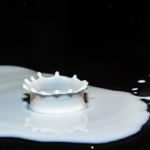Have you ever bitten into a leaf of lettuce and been met with an unexpected bitterness? It can be quite unpleasant and leave you wondering if it’s safe to eat.
As someone who loves incorporating fresh greens into my meals, I’ve often found myself wondering about the safety of bitter lettuce. In this article, we’ll explore the causes of bitterness in lettuce, whether or not it’s safe to consume, and how to reduce bitterness for a more enjoyable eating experience.
Lettuce is an incredibly versatile vegetable that can add crunch and flavor to salads, sandwiches, and even smoothies. However, when it turns bitter, it can ruin an otherwise delicious dish. Bitterness in lettuce can be caused by a variety of factors such as environmental stressors like heat or drought, genetic predisposition, or simply aging past its prime.
While some people may find the taste unpalatable, the question remains: is bitter lettuce safe to eat? Let’s dive deeper into this topic to find out.
Key Takeaways
- Bitter lettuce is safe to eat in moderation, but contains harmful compounds in large amounts.
- Bitterness in lettuce can be caused by environmental stressors, genetic predisposition, aging, hot weather, lack of water or nutrients, and exposure to pests and diseases.
- Ways to reduce bitterness include mixing with milder greens or cooking, adding flavorful dressings or pairing with other flavors, and properly storing to prevent spoilage.
- Proper storage involves using an airtight container or bag with a paper towel inside, and discarding immediately when signs of spoilage are present.
Understanding the Causes of Bitterness in Lettuce
You might think that bitter lettuce is just a result of poor quality, but did you know that it can also be caused by environmental factors and genetics? The causes of bitterness in lettuce are varied and complex.
Some lettuce varieties have a natural tendency to be bitter due to their genetic makeup. For example, certain types of chicory and endive are inherently bitter.
Environmental factors such as hot weather, lack of water or nutrients, and exposure to pests and diseases can also cause lettuce to become bitter. Lettuce plants produce a milky sap that contains compounds called sesquiterpene lactones which give the plant its characteristic flavor.
When the plant is under stress from environmental factors, it produces more of these compounds which can make the leaves taste bitter. Understanding these causes can help growers take steps to prevent bitterness in their crops, such as choosing less-bitter varieties or providing optimal growing conditions for their plants.
Is Bitter Lettuce Safe to Eat?
Consuming greens with a strong taste profile may lead to certain health concerns. However, bitter lettuce is generally safe to eat in moderation. The occasional consumption of small amounts of bitter greens will not cause any significant health risks.
Bitter lettuce, in particular, can have high levels of certain compounds that could be harmful if consumed in large amounts. For instance, some types of lettuce contain lactucarium, which is known to have sedative properties. Ingesting excessive amounts of this compound could cause drowsiness and impair cognitive function.
For those who are concerned about the potential negative effects of consuming too much bitter lettuce, there are alternative options available. One option is to mix bitter greens with other milder tasting varieties for a more balanced flavor profile. Another option is to cook the greens before eating them as this can help reduce their bitterness while retaining their nutritional value.
Ultimately, it’s all about finding the right balance between taste preference and overall health concerns when it comes to consuming bitter lettuce or any other type of food.
Tips for Reducing Bitterness in Lettuce
By incorporating a few simple techniques into your meal preparation, you can transform the taste of your greens and enjoy a more well-rounded flavor. If you find that your lettuce is too bitter for your liking, consider trying out these tips for reducing bitterness:
-
Mix in flavorful dressings: Adding tasty dressings to your salad can help balance out the bitter taste of lettuce. Try mixing together some oil and vinegar with a bit of honey or mustard to create a sweet and tangy dressing.
-
Soak the leaves: Lettuce leaves can be soaked in cold water for about 10-15 minutes before being used in salads or other dishes. This helps to remove any excess bitterness and improve their overall taste.
-
Cooking methods: Cooking lettuce might not sound like an appealing idea, but it can actually help reduce its bitterness. Grilling or sautéing lettuce briefly over high heat can enhance its flavor while also reducing bitterness.
-
Pair with other flavors: Mixing together different ingredients with strong flavors, such as cheese, nuts, fruits, or even bacon bits, can help mask the bitter taste of lettuce while adding extra texture and nutrition to your dish.
By following these simple tips, you can easily turn bland and bitter lettuce into a delicious addition to any meal!
How to Store Lettuce to Prevent Bitterness
Properly storing your leafy greens will ensure maximum freshness and flavor, leaving you with crisp and delicious salads every time. One of the most important things to keep in mind when storing lettuce is to remove any excess moisture. Too much moisture can cause the leaves to wilt and rot quickly, resulting in a short shelf life. To prevent this, make sure to dry your lettuce thoroughly before storing it.
Another key technique for storing lettuce is to use an airtight container or bag. This will help keep out any excess air that can cause the leaves to become brown and bitter. Additionally, placing a paper towel in the container or bag can help absorb any excess moisture and prolong the shelf life of your lettuce.
By following these simple storing techniques, you’ll be able to enjoy fresh and flavorful lettuce for days on end!
Other Uses for Bitter Lettuce
If your leafy greens have a slightly unique taste, they may lend themselves well to creative uses in the kitchen. Bitter lettuce, for example, can be used in a variety of cooking techniques and flavor pairings that will surprise even the most seasoned cooks.
Here are some ideas to make the most out of your bitter lettuce:
-
Use it as a substitute for spinach or arugula in salads. The bitterness of the lettuce adds depth and complexity to any salad. Just make sure to balance it out with sweet ingredients like fruits or honey-based dressings.
-
Sauté it with garlic and olive oil. This Mediterranean-inspired dish is perfect as a side dish or mixed into pasta dishes. The bitterness of the lettuce pairs well with the savory flavors of garlic and olive oil.
-
Make bitter lettuce pesto. Traditional basil pesto gets an upgrade when you use bitter lettuce instead. Simply blend together pine nuts, parmesan cheese, garlic, lemon juice, and your bitter lettuce leaves.
-
Add it to smoothies. While not everyone may enjoy this option, adding a few leaves of bitter lettuce can add a unique twist to your daily smoothie routine.
-
Roast it with other vegetables. Tossing bitter lettuce with other hearty vegetables like carrots or potatoes before roasting creates an interesting mix of flavors.
Don’t let bitterness turn you off from using this type of lettuce in your cooking. With these creative ideas and combinations, you might just discover a new favorite ingredient!
When to Discard Bitter Lettuce
Knowing when to toss out lettuce that’s past its prime is important for maintaining the freshness of your salads. Bitter lettuce may not necessarily be unsafe to eat, but it can indicate that the lettuce is reaching the end of its shelf life.
Signs of spoilage in lettuce include wilting or slimy leaves, discoloration, and a bad smell. When you notice any of these signs, it’s best to discard the lettuce immediately.
To prevent spoilage and extend the shelf life of your lettuce, proper storage methods are crucial. First, make sure you remove any excess moisture by drying the leaves with a paper towel before storing them in an airtight container or plastic bag with some air holes punched in it.
Keep the container/bag in the fridge at around 40 degrees Fahrenheit. Avoid placing anything on top of the container/bag as this can cause bruising, which accelerates spoilage.
Following these storage guidelines can help keep your lettuce fresh for up to two weeks!
Frequently Asked Questions
Can bitter lettuce cause any health problems?
Possible output: Bitter lettuce may pose health risks due to its high level of lactucin, causing digestive issues. We recommend washing it thoroughly and mixing with other greens for a balanced diet. Nutrient-wise, bitter lettuce has comparable vitamins and minerals to spinach or kale.
What are the nutritional benefits of bitter lettuce?
Bitter lettuce, grown using organic techniques, is rich in vitamins A and K, antioxidants, and fiber. It has cultural significance in certain cuisines but should be consumed in moderation due to its bitter taste.
Are there any cooking methods that can reduce bitterness in lettuce?
We’ve found that blanching methods and marinating techniques can help reduce bitterness in lettuce. While it’s safe to eat, these techniques can enhance the flavor and make it more enjoyable to consume.
Can bitter lettuce be used in smoothies or other drinks?
We can use bitter lettuce in smoothie recipes for a unique flavor and added nutrients. Alternatively, it can be used as a salad base or cooked in dishes. As long as the lettuce is not spoiled, it is safe to eat.
How long does it take for lettuce to turn bitter after it is harvested?
When harvested, lettuce is fresh and flavorful. However, over time, it can turn bitter. The timeline for bitterness varies depending on the type of leafy greens used and storage conditions. This affects taste and salad ingredient quality.
Conclusion
So, as we come to the end of this article, let’s answer the burning question: is bitter lettuce safe to eat? The simple answer is yes, it’s safe to eat.
However, consuming excessively bitter lettuce may not be a pleasant experience for your taste buds. But don’t worry! There are tips and tricks to reduce bitterness in lettuce, such as soaking it in cold water or adding acidic ingredients like lemon juice.
And if all else fails, there are other creative uses for bitter lettuce such as using it as a natural pest repellent or incorporating it into smoothies for added health benefits.
In conclusion, while bitter lettuce may not be the most appetizing option out there, it can still be consumed safely with some adjustments. So go ahead and experiment with different ways of preparing and consuming your greens – you never know what delicious combination you might discover!




